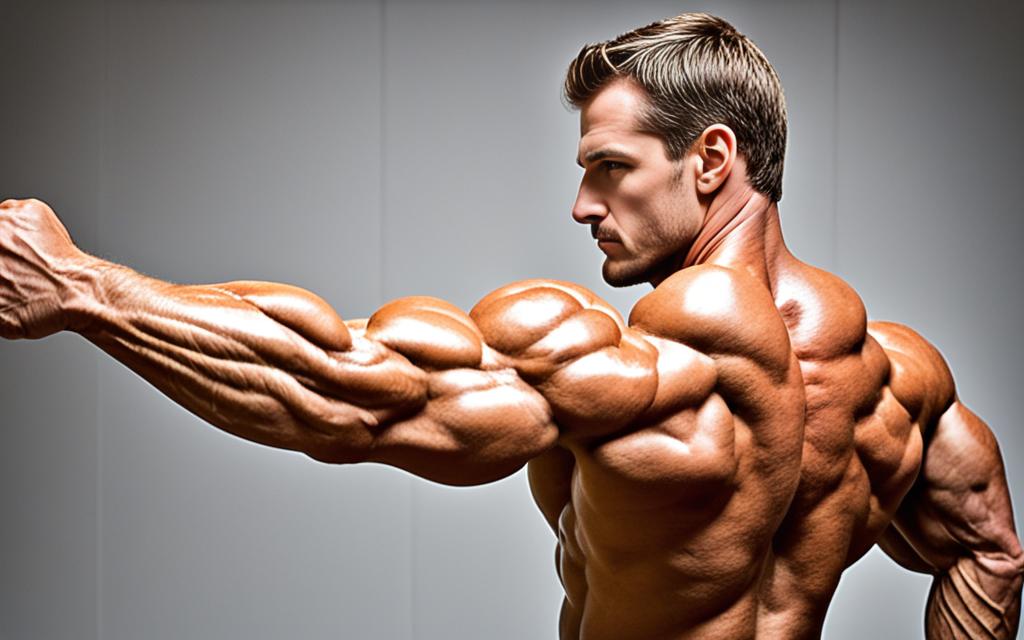If you’re looking to build impressive upper body strength and muscle, dips should be a staple in your workout routine. This compound exercise targets multiple muscle groups, making it a highly effective tool for sculpting a powerful physique. In this comprehensive guide, we’ll explore the primary and secondary muscles that dips work, as well as the benefits of incorporating this exercise into your fitness regimen. Whether you’re a beginner or an experienced lifter, understanding the muscle-building potential of dips can help you maximize your upper body gains and take your fitness to the next level.
Dips are a compound exercise that target multiple muscle groups in the upper body, including the chest, shoulders, and triceps. By understanding the specific muscles worked by dips, you can better tailor your training and exercise selection to achieve your desired upper body goals.
Understanding the Dip Exercise
Dips are a bodyweight exercise that involve lowering your body down between two parallel bars or handles, then pushing back up to the starting position. This how to perform dips movement primarily targets the chest, shoulders, and triceps, making it a highly effective proper dip form compound exercise for building upper body strength and muscle.
Proper form is essential to target the right muscles and avoid injury, so it’s important to understand the proper dip form technique before incorporating dips into your routine. This includes keeping your body upright, elbows close to your sides, and shoulders engaged throughout the movement.
There are also several common dip variations you can explore to target different muscle groups or increase the challenge, such as wide-grip dips, weighted dips, and negatives. Experiment with these variations to find the best fit for your fitness goals and experience level.
By mastering the proper dip form and understanding the various common dip variations, you can maximize the effectiveness of the dip exercise and unlock its full muscle-building potential.
Primary Muscles Worked by Dips
Dips are a compound exercise that primarily target three major muscle groups in the upper body: the chest (pectoralis major and minor), shoulders (deltoids), and triceps. The pushing motion of the dip exercise engages these muscles to lift your body weight, making it a highly effective exercise for building strength and size in these areas.
The chest muscles worked by dips include the pectoralis major and minor, which are responsible for adduction, flexion, and internal rotation of the shoulders. By performing dips, you’ll challenge these chest muscles to stabilize and move your body weight, leading to increased muscle activation and growth.
The shoulder muscles worked by dips are the deltoids, which are divided into three heads: the anterior (front), lateral (side), and posterior (rear) deltoids. The pushing motion of the dip exercise primarily engages the anterior and lateral deltoids, allowing you to develop well-rounded shoulder strength and definition.
Finally, the triceps muscles worked by dips are the long, lateral, and medial heads of the triceps brachii. The triceps are the primary movers during the pushing phase of the dip, and they play a crucial role in extending the elbows and lifting your body weight.
By understanding the specific primary muscles worked by dips, you can better tailor your training and exercise selection to achieve your desired upper body goals, whether that’s building a bigger, stronger chest, broader shoulders, or more defined triceps.
Secondary Muscles Involved
While dips primarily target the chest, shoulders, and triceps, they also engage several secondary muscle groups, including the lats (latissimus dorsi) and forearms (brachioradialis and wrist flexors). These secondary muscles play a crucial role in stabilizing and supporting the upper body during the dip movement.
The lats, which are responsible for pulling the arms down and back, are activated to help stabilize the upper body and maintain proper form during the dip exercise. This engagement of the lats not only enhances upper body stability but also contributes to the overall development of the back musculature.
Additionally, the forearm muscles, particularly the brachioradialis and wrist flexors, are involved in gripping the parallel bars or handles and supporting the weight of the body. This activation of the forearm muscles helps to improve grip strength and stability, which can be beneficial for a variety of upper body exercises and daily functional tasks.
By understanding the secondary muscles involved in dips, you can better target and maximize the benefits of this compound exercise, leading to a more well-rounded and comprehensive upper body development.
Benefits of Incorporating Dips into Your Workout
Incorporating dips into your workout routine can provide numerous benefits for your upper body development and overall strength. Dips are an excellent compound exercise that can help build significant muscle mass and strength in the chest, shoulders, and triceps. By challenging these major muscle groups, dips can lead to increased upper body strength, which can translate to improved pressing power and better performance in exercises like the bench press, overhead press, and push-ups. Additionally, the muscle hypertrophy (growth) stimulated by dips can contribute to a more impressive and well-developed upper body physique.
One of the primary benefits of incorporating dips into your workout is the increased upper body strength they can provide. By requiring you to lift your own body weight, dips engage the chest, shoulders, and triceps in a powerful pushing motion, which can lead to significant strength gains in these key muscle groups. As your upper body strength improves, you’ll notice enhanced performance in other pressing exercises, allowing you to lift heavier weights and potentially break through plateaus.
In addition to the strength benefits, dips can also promote muscle hypertrophy, or muscle growth, in the targeted areas. The challenging nature of the dip movement stimulates the muscle fibers, triggering a cascade of cellular processes that lead to the development of larger, stronger muscles. This can contribute to a more impressive, well-defined upper body physique, making dips an essential exercise for those seeking to build significant muscle mass and sculpt their chest, shoulders, and arms.
Furthermore, the improved pressing power gained from dips can translate to better performance in a variety of upper body exercises. Whether you’re aiming to increase your bench press, overhead press, or push-up strength, the strength and muscle development from dips can help you push more weight and rep out more reps, leading to greater overall upper body development and performance.
Muscles That Dips Work
Dips are a compound exercise that primarily target the following muscle groups:
| Primary Muscles Worked | Secondary Muscles Involved |
|---|---|
|
|
The pushing motion of the dip exercise engages these primary muscle groups to lift your body weight, making it a highly effective exercise for building upper body strength and muscle. Additionally, the secondary muscle groups, such as the lats and forearms, play a stabilizing role during the dip movement.
Programming Dips Effectively
To effectively incorporate dips into your workout routine and maximize the muscle-building benefits, consider the following programming strategies:
Frequency: Aim to perform dips 2-3 times per week, allowing for adequate recovery between sessions. This frequency can help stimulate muscle growth without overtraining.
Volume: Start with a manageable number of sets and reps, such as 3-4 sets of 8-12 reps. As you progress, gradually increase the volume to challenge your muscles and promote further growth.
| Dip Progression | Sets | Reps |
|---|---|---|
| Beginner | 3-4 | 8-12 |
| Intermediate | 4-5 | 10-15 |
| Advanced | 5-6 | 12-20 |
Intensity: Incorporate progressive overload by gradually increasing the resistance, such as adding weight or performing weighted dips, to continually challenge your muscles and drive adaptation.
Variation: Explore different dip variations, such as narrow-grip dips, wide-grip dips, or bench dips, to target the muscles in slightly different ways and prevent plateaus.
By strategically programming dips into your workout routine, you can maximize the muscle-building benefits and take your upper body strength and development to new heights.
Conclusion
In conclusion, dips are a highly effective compound exercise that target multiple muscle groups in the upper body, including the chest, shoulders, and triceps. By understanding the primary and secondary muscles worked by dips, you can strategically incorporate this exercise into your workout routine to build impressive upper body strength, muscle mass, and pressing power.
Remember to focus on proper form, progressively overload, and allow for adequate recovery to maximize the benefits of dips and take your fitness to new heights. Incorporating dips into your training program can be a game-changer, helping you sculpt a strong, well-developed upper body that will not only look impressive but also enhance your performance in a variety of exercises and activities.
So, don’t hesitate to make dips a staple in your workout routine. With consistent practice and dedication, you’ll be well on your way to unlocking the full potential of this powerful exercise and taking your upper body development to new levels. Get ready to impress with your newfound strength and muscle!










